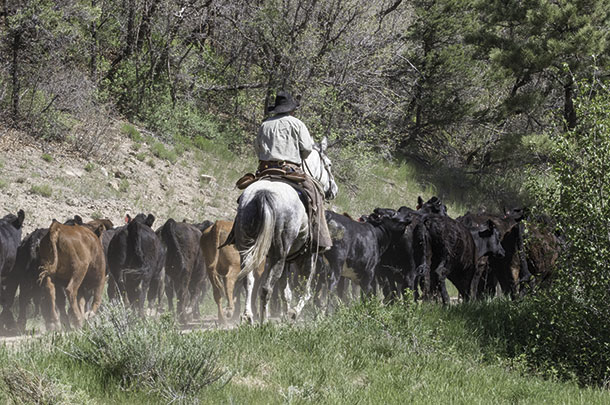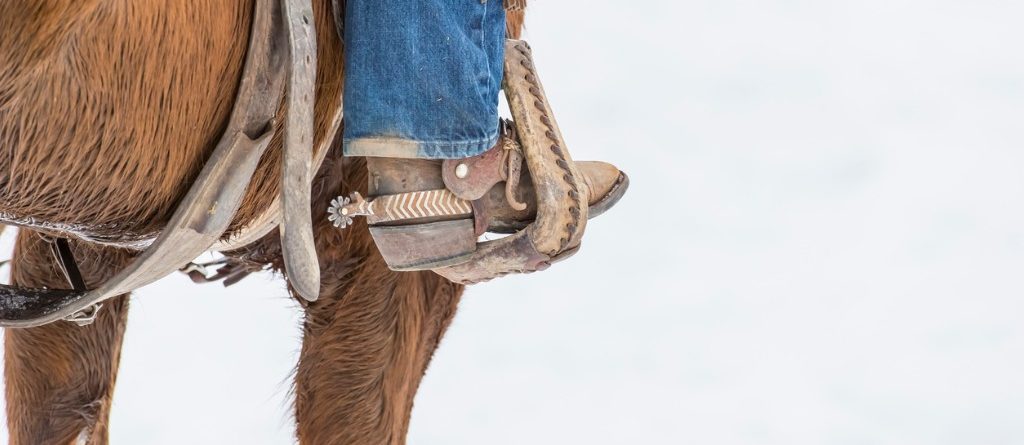Lee Jones for Progressive Cattle
Stockmanship, like sustainability, is a commonly used word many might find hard to clearly define succinctly.
Stockmanship has been defined as the knowledgeable and skillful handling of livestock in a safe, efficient, effective and low-stress manner, and denotes a low-stress, integrated, comprehensive, holistic approach to livestock handling (Stockmanship Journal).
However, stockmanship is more than just handling. It is concerned with the whole life of the animal in our care. We used to call it animal husbandry or stewardship. First and foremost, stockmanship is livestock-centered. By that, I mean we must consider the natural behavior and needs of the animal or group. There are three essential elements of good stockmanship: an environment that provides protection and comfort appropriate for the species; adequate, well-designed facilities that enable low-stress handling; and a comprehensive herd health management program.
People and environment
Low-stress handling begins long before cattle are gathered from the pasture or pen. Ideally, animals need to be familiar with the caregivers and have had some exposure or interaction with them prior to being gathered. Every time we interact with an animal, we are training them. And just like with people, you only get one chance to make a first impression, and that first impression often determines whether the animal trusts you or their environment for the rest of their life or time on your farm.
New people or situations make cattle nervous. Watch the signals cows give you. You can tell if a cow just doesn’t want to cooperate or if she is afraid. A spoiled cow that is used to doing what she wants is handled differently than one that is afraid and doesn’t know what you are asking her to do.
In our busy culture, patience isn’t always easy to practice. With cattle, however, exercising patience is essential. Cattle can be worked with coercion – and often are because of inadequate or untrained labor and poorly designed facilities and just plain too much to do in a day.
However, even if we get a chore done fast without injury to cattle or people, the stress on our cattle may cost us in the long run. Recent animal performance research has shown us that even with low-stress handling, there is a negative effect on cattle health or performance just from working them through the chute. This is a trade-off since our purpose to work them is to apply an animal health procedure or product or collect important data.
Our goal, then, should be to minimize the negative impact on health, well-being or performance. While it seems like a contradiction, slower is faster when working cattle.
Creating trust in livestock
We train animals every time we interact with them. We train them to trust us or distrust us. The concept of deliberately training cattle isn’t widely accepted or practiced. Whether it is moving cattle to another pasture or working them through a chute, folks who handle cattle regularly often remark how easy they are to train. Even very excitable cattle can be trained to handle quietly.
Before I moved back to Georgia, my wife and I owned Frontier Genetics International, a livestock and equine reproduction facility in Nebraska. We housed embryo transfer donors and had several bucking stock breeders as clients. We usually didn’t accept any cattle that were dangerous to handle.
However, a donor cow (what my youngest daughter called rodeo mamas) with a calf was dropped off by a client over a weekend. When I tried to bring her to the barn and chute, she jumped out of the pens. She did that a few times, and I was ready to give up, but the owner couldn’t pick her up for a month. Since she was going to be a resident anyway, we eventually trained her to walk quietly through the barn and chute, but it took four weeks of training and acclimation to the facilities. After that, we were able to successfully collect embryos four to five times before she returned home. For us, low-stress handling was a must not just for excitable cattle but even relatively docile Bos taurus cattle as well.
Now that is an extreme example but, for a cow-calf operation, training cows pays long-term dividends. Some folks just open up all the alleys and chute and let cows follow each other through the alley and chute without doing anything at all. Once through the working facilities without being caught, stabbed, prodded, poked or anything else, it seems cows are much easier to work through the chute afterward.
Anyone who has trained a young horse to load in a trailer knows that if the first experience loading is low-stress, even pleasant, the next time they try to load the horse is much easier. For cattle and horses, the first experience sets the tone for our future relationship.
Training cattle is one thing; training or retraining people is another thing entirely. Cattle really don’t have the capacity to decide to change, but humans do. Determining the need to change and then deciding to do it can be a challenge, though.
If you dread working your herd, it might be a sign something needs to change. It might simply be facility design, or it could be a different approach to handling is needed. Having an objective third party observe animal handling is a great way to figure out what the next step needs to be. Walking through the facilities and noting what is broken or damaged or what needs frequent repair may be a sign of a bottleneck or weak spot. What can be done to improve cattle flow through that spot?
Self-assessment guides for livestock handling are available through the Beef Quality Assurance website (www.bqa.org/assessments.aspx). Handling practice checklists and score sheets help reveal areas that might need improvement. If cattle regularly run over helpers, facilities require frequent repair, there is a lot of yelling, or you buy hot shot batteries by the case, there might be room for improvement.
Actually, there is always room for improvement and better, more effective ways of doing anything. Anything worth doing is worth doing well with an eye for constant improvement.
Economics of low stress
Most folks think of low stress in terms of animal welfare. There is plenty of research that documents the positive relationship of managing stress to enhanced animal health and performance. Dairy cows that are handled quietly give more milk and calves weaned with low-stress techniques experience less shrink and illness than calves weaned abruptly. Less illness means fewer lost pounds and significantly reduces treatment costs. Producers that experience several sick calves after weaning might benefit from a review of management practices to identify areas for improvement and how to implement low- or no-cost ways to enhance calf health through good stockmanship.
Stockmanship and low-stress handling reduce the need to use animal health products to treat or prevent disease in intensive production environments. Society is concerned about the indiscriminate use of anti-microbials in livestock production. Anything we can do to reduce their use and demonstrate good stewardship will improve public confidence in how livestock are raised.
Stockmanship and resources
The good stockman knows his or her resources and is a good business manager. Bud Williams was fond of telling folks that “ranchers have three things in their inventory: money, grass and animals. You can never have too much money or too much grass, but you sure can have too many animals.” It’s beyond the scope of this article to go into a lot of detail, but good stockmen manage grass and soils and let the cows harvest the grass.
To some degree, herds on understocked pastures can increase production (calf weaning weights) but herds on overstocked pastures not only don’t reach their full potential, the overall herd production is severely diminished, soils become depleted or degraded, future pasture health is compromised, and cow herd fertility suffers as well as calf weights and calf health. Calves from overgrazed pastures are more likely to experience health problems after weaning. Good stockmanship means knowing what the carrying capacity is of the pastures and stocking appropriately.
Principles of cattle handling
- Slower is better. Obviously, this has its limits but, for the most part, slower is better and faster than getting in big hurry.
- Pressure from the side and only when cattle see where to go. When cattle are pressured from the rear, they are likely to turn around to face the pressure. Cattle want to see you. Once cows can see the opening and are facing that direction, then we can push them in that direction from their side behind the point of their shoulder.
- Cattle must be comfortable to go by you and stay straight. Cattle naturally face any threat. If cattle feel threatened by you, they won’t walk straight or go by you.
- When working cattle in an alley, going with the flow slows them down and going against the flow speeds them up. This seems counter-intuitive at first, but it works. Try it and see.
- Cattle can only process one thing at a time. Many folks like to talk to their cattle. If cattle are used to this, then it probably won’t cause problems. However, multiple stimuli including sight, sound and touch creates confusion for cattle and thereby increases stress and the flight response.
- Cows work best when they are ready; it’s up to us to get them there (Dr. Ron Gill).
Simply put, I think good stockmen are students of their cattle. Good stockmanship is like a timely rain, sunshine and hybrid vigor; it doesn’t cost anything extra but the benefits to cattle health, welfare and performance are tremendous. ![]()
PHOTO: For reasons related to safety and ease on cattle, a slower pace with livestock movement is usually the best stockmanship method. Photo by Mike Dixon.

Lee Jones
Beef Production Management and Field Services Veterinarian
University of Georgia
Email Lee Jones








